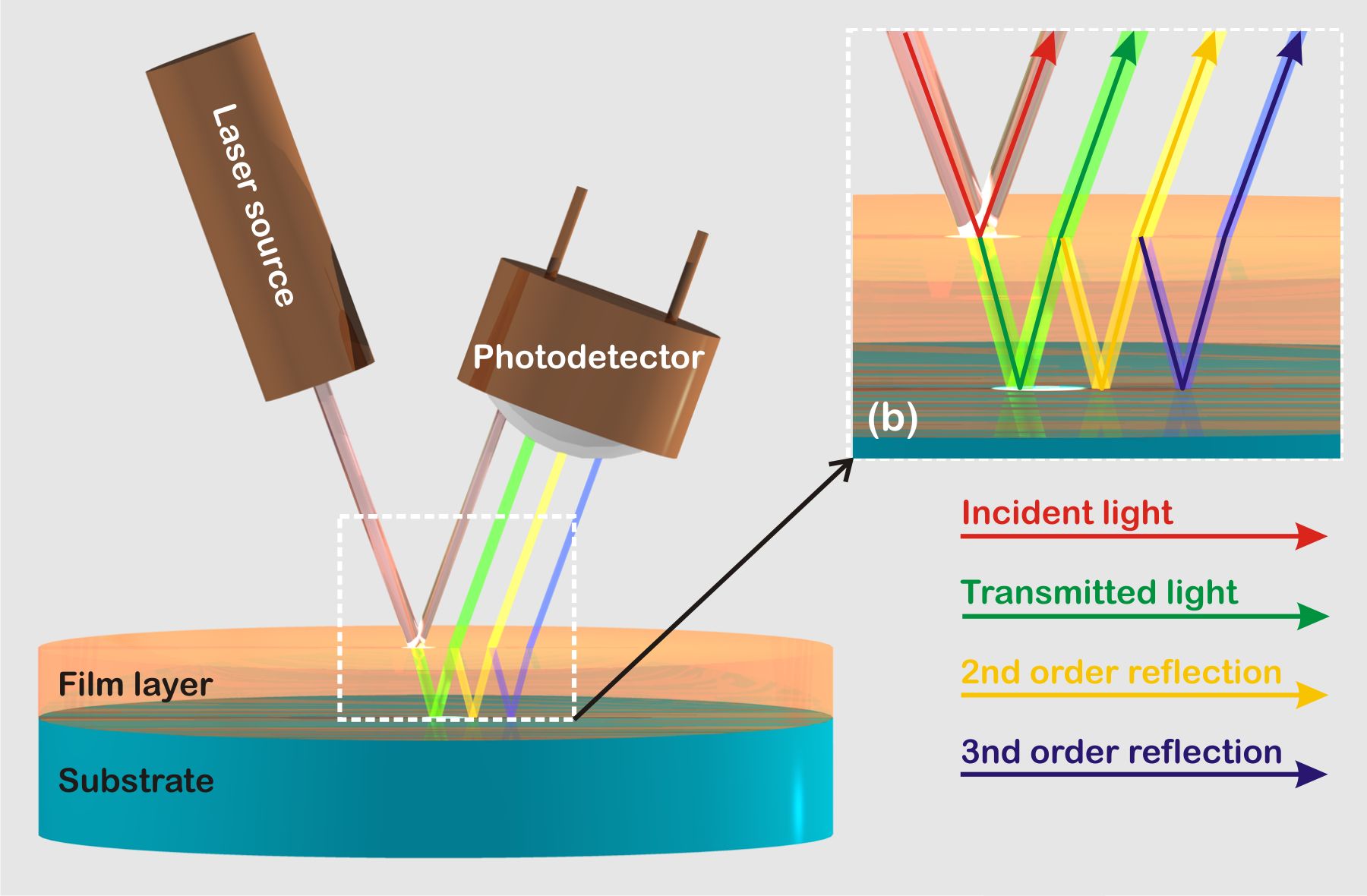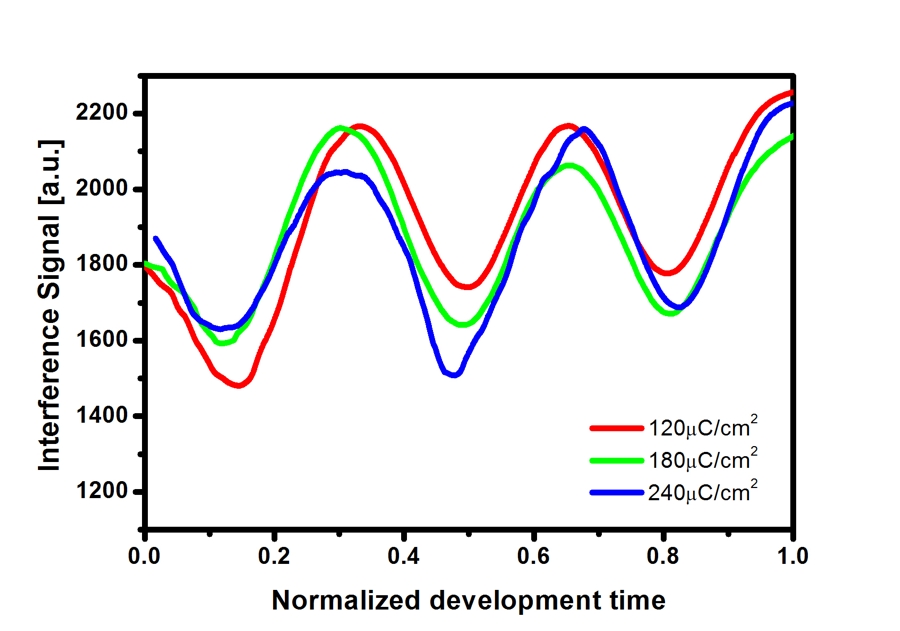Single Wavelength Interferometry(SWI) is a low cost compact optical methodology suitable for the in-situ monitoring of dynamic phenomena, such as film swelling, film thickness loss, taking place during the processing of semi-transparent and transparent films. In figure 1 a typical SWI set-up is illustrated.
 |
Figure 1. Schematic of SWI setup. (a) The optical set-up consists of a solid-state laser and a photodetetctor placed almost vertical to the sample under investigation. The sample consisted of a reflective substrate (e.g. Si wafer) and a transparent or semi-absorbing film. (b) Detail of the varius reflections of the laser beam due to the reflection between the film layer and the substrate. |

are the relative refractive indices between adjacent layers (0 is considered as ambient, 1 the film, 2 the substrate), n1 the refractive index and d1 the film thickness respectively, while n2 the refractive index of the substrate, and λ the corresponding laser wavelength used in the measurement. In FR-Monitor the algorithm implemented solves the reflectance equation without any approximation leading to more accurate results.
From eq. 1, the signal at the detector depends on refractive index, film thickness and probing wavelength. Any changes in film properties cause change in the detector’s signal that is recorded in the PC through the data acquisition card. From eq. 1, and by considering a film with refractive index 1.5 and a probing wavelength of 635nm the thickness change for a complete period in the detector’s signal is ~211nm while if the wavelength is 532nm (green) the equivalent thickness is reduced to ~177nm offering more sensitive detection of small thickness/refractive index changes. The quantitative analysis of film thickness changes is limited to output signal changes larger than half of the corresponding period.
 |
Figure 2. Typical dissolution measurement of a 600nm thick PMMA film for various e-beam doses, with a SWI set up.
|
In figure 2 the dissolution of PMMA films, previously exposed by electron beam at different exposure doses, is illustrated. By applying eq. 1 backwards, the initial film thickness is calculated ~600nm (slightly less than 3 full periods) and comes into very good agreement with profilometer measurements.
The most significant characteristic of SWI methodology is the simple set-up integration, great flexibility and very low development cost. However due to the use of single wavelength, SWI should be considered as a process monitor methodology rather than a film measurement and characterization one.
Typical applications are process monitoring, such as etching monitoring, spin coating monitoring etc.
